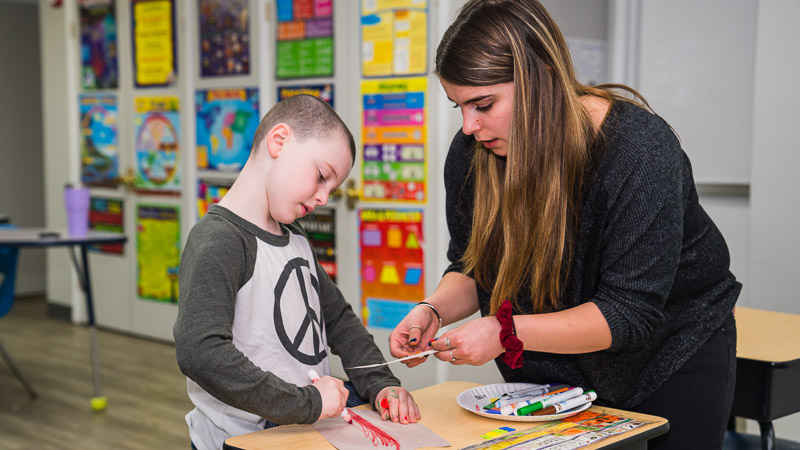Navigating the complex world of social interactions can be particularly challenging for neurodivergent children. Unlike their neurotypical peers, these unique learners may not instinctively pick up on social cues.
These children may return home from school, claiming no one likes them, or interpreting others as being angry with them. They may have a difficult time reading a peer’s reaction, resulting in a negative interaction. Maybe they are simply on the sidelines of the play, hesitant to make a misstep.
No matter the case, with thoughtful guidance and more engaging strategies, you can effectively support your child in understanding these crucial aspects of communication.
Make Social Observation A Game
Transforming social observation into a game can be a more fun way to teach your child about social cues. Asking your child to be a “social spy” along with you can encourage them to observe people in different settings and identify specific social cues or emotional expressions.
Ask your child to note how their peers greet each other, how their conversations unfold, what emotion they are feeling, and even how they are dressed. This method not only makes learning these skills more interesting, but it also allows the child to understand social interactions in a real-world context.
Role-Play Typical Scenarios
Role-playing is a powerful tool in teaching social skills. By acting out common social scenarios, children get a chance to practice both interpreting and using social cues in a controlled, low-pressure environment.
For instance, you could role-play a situation where one character feels left out at a party, helping the child understand cues like body language and facial expressions that indicate someone’s feelings. This experiential learning is often more impactful than theoretical conversations.
Reflect On Past Experiences
Reflection is a crucial part of learning any skill. Discussing past social experiences with your child helps them understand what went well and what could be improved. This reflection process can involve going over a recent interaction and discussing the social cues involved, how they were interpreted, and how different interpretations may have changed the outcome.
For example, consider a situation where a child interrupts a class discussion repeatedly without realizing their classmates’ shifting gaze or the teacher’s raised eyebrows are cues for him to wait his turn. Reflecting on this incident would involve exploring how responding to these cues might have led to a more positive interaction, helping him learn to identify similar cues in the future.
Teach Discrete Pieces One At A Time
It’s essential to break down social skills into smaller, manageable components when teaching neurodivergent children. Focusing on one aspect at a time – such as facial expressions, tone of voice, or body language – prevents overwhelming the child and allows for deeper understanding of each element.
Using clear, straightforward explanations and visual aids like emotion cards or social stories can further aid in this segmented learning approach.
Teaching your child about social cues will require patience, creativity, and empathy. By making these “lessons” interactive, you are providing them with valuable and lasting support. With these skills, they will be empowered to navigate social interactions with greater confidence.
West Hills Academy views social skills as equal to academic skills in a child’s education. We individualize each child’s social skills program to help them grow into confident, secure young people with the ability to navigate a variety of social situations.
For more information on how our school can help your child, reach out here.
Resources:
https://carolinemaguireauthor.com/help-your-kid-with-social-signals/
https://www.understood.org/en/articles/8-ways-to-help-your-grade-schooler-learn-social-cues
https://www.empoweringparents.com/article/misreading-social-cues-and-your-childs-behavior/



